Peru prepares for El Nino
- Published
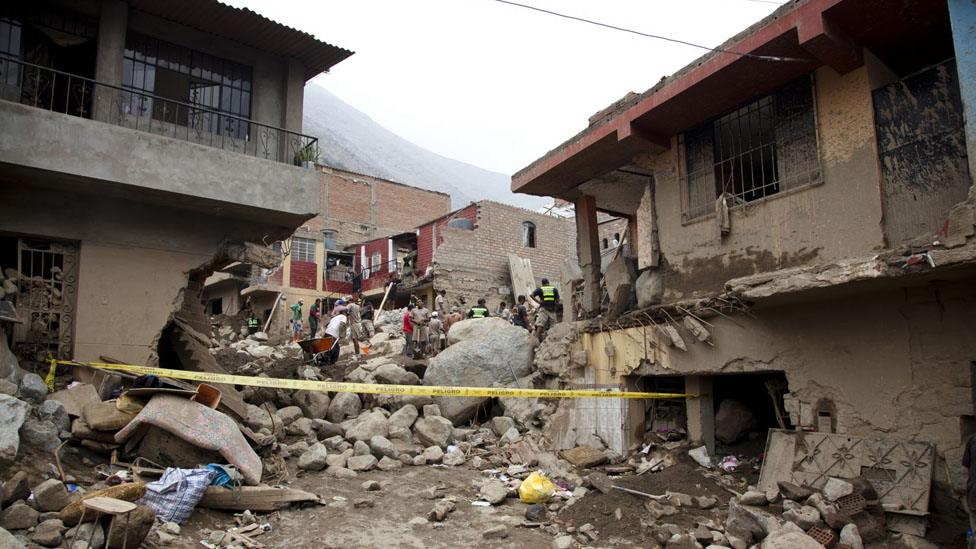
Boulders tumbled down Grau Street in Moyopampa after a particularly heavy storm in March
People in the neighbourhood of Moyopampa, 35km (22 miles) east of Lima, say 23 March was a sunny Monday afternoon like so many others.
But then the skies darkened and heavy rain like no one had seen in living memory began to fall.
It rained for just 30 minutes.
"After the rain, there was a silence followed by terrible thunder and lightning," says 63-year-old resident Cristina Inga.
Her house was destroyed first by flooding, and then tonnes of rocks tumbled down from the mountain.
"We survived by escaping through the roof," she recalls.
"All the neighbours did the same; we all helped each other."
When the landslide was over, their street was covered in mud and boulders over two metres (6ft 5 inches) high.
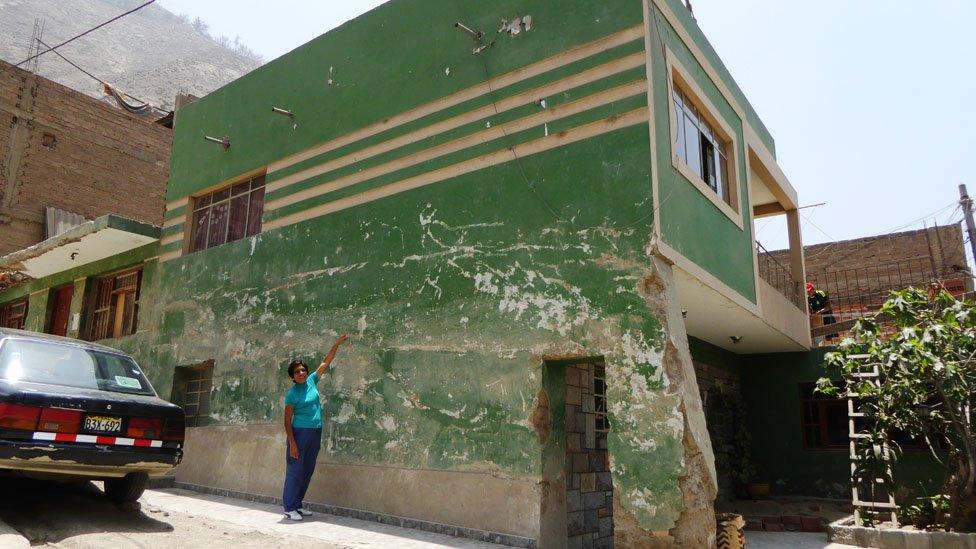
The mud reached the upper storey of buildings in Moyopampa
The street they lived on ran along a wash, a natural watercourse which floods when it rains heavily in the Andes.
It is by no means a place to build homes, but the people who live here are poor.
'No choice'
"I was born here, my parents settled on this land because we had no money" Ms Inga explains.

There is not much left of Cristina Inga's house
Her house had been destroyed three times before 23 March.
She currently lives in a wooden shack but is proud to be the legal owner of the plot of land it is build on.
As for the risks, she says: "We don't move because we have nowhere else to go."
What happened in Moyopampa earlier this year is seen by many as a sign of things to come.
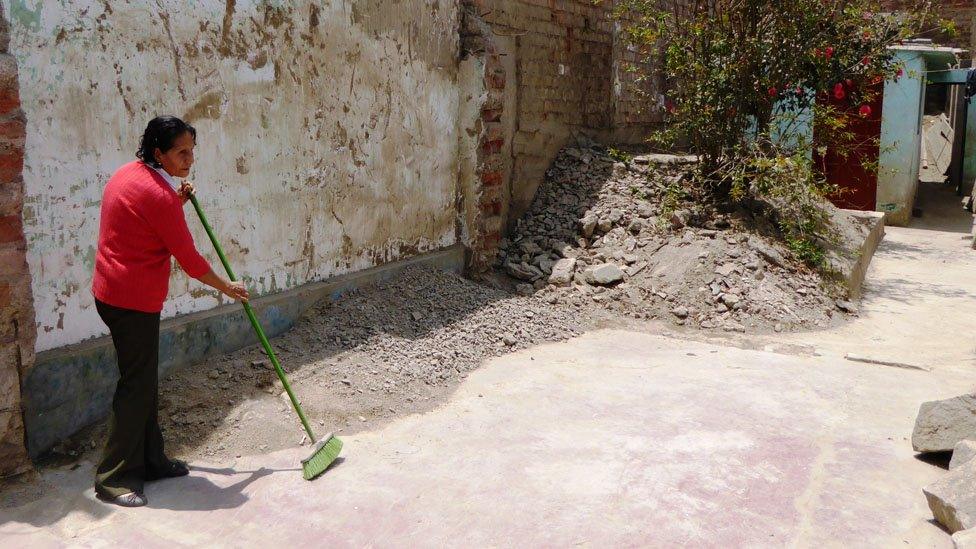
Only the walls are still standing where this woman's living room used to be
According to the World Meteorological Organization (WMO), the region may be facing the worst El Nino weather phenomenon in over 60 years between now and March.
At risk
The Peruvian government has already declared a state of emergency in more than half of the country's regions.
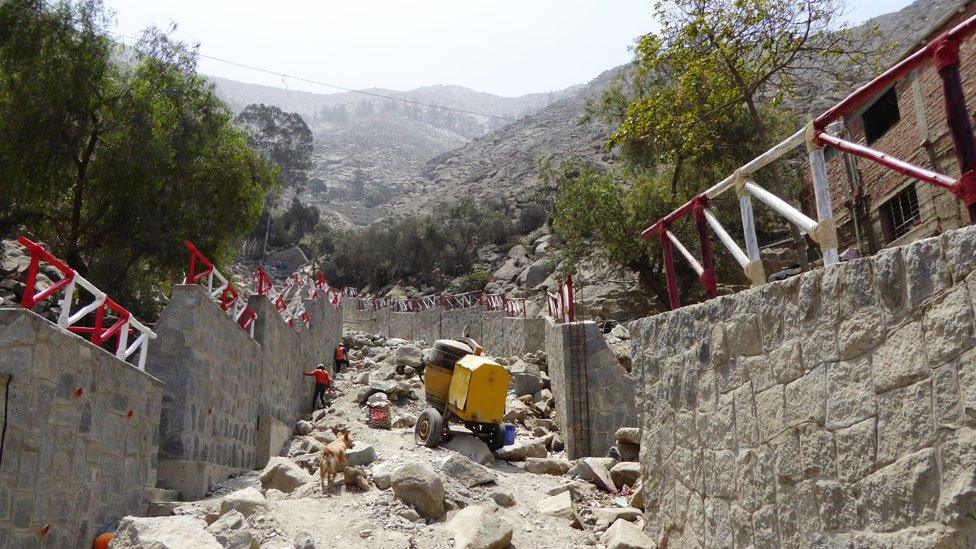
The street where Ms Inga lives is being reinforces by concrete walls on each side
Peru, along with Ecuador, are the two countries most directly affected by El Nino.
In fact, it was Peruvian fishermen who named El Nino (The Child) in a reference to Baby Jesus because it used to arrive around Christmas time.
But for the people of Moyopampa, El Nino's arrival is not something they look forward to.
It is one of 107 places in Peru which the country's Civil Defence Institute (Indeci) has declared "vulnerable".

Moyopampa is one of more than 100 of places at risk from flooding and mudslides
Three million people live in these vulnerable areas and are at risk of losing everything to heavy rains, mudslides and flash floods.
The government has set aside three billion Peruvian soles ($1bn; £0.65bn) to respond to the fall-out from El Nino and to support all sectors of the economy threatened by it.
'In God we trust'
Previous El Ninos destroyed key roads and bridges leaving communities isolated and often desperate for help.
So the ministry of transport is sending more than 1,000 portable bridges to different locations along Peru's coast.
So far, most of the government's efforts have been focused on cleaning the beds of coastal rivers, building floodwalls in vulnerable locations and making sure there is enough equipment to help in case of floods, mudslides or any other disasters.
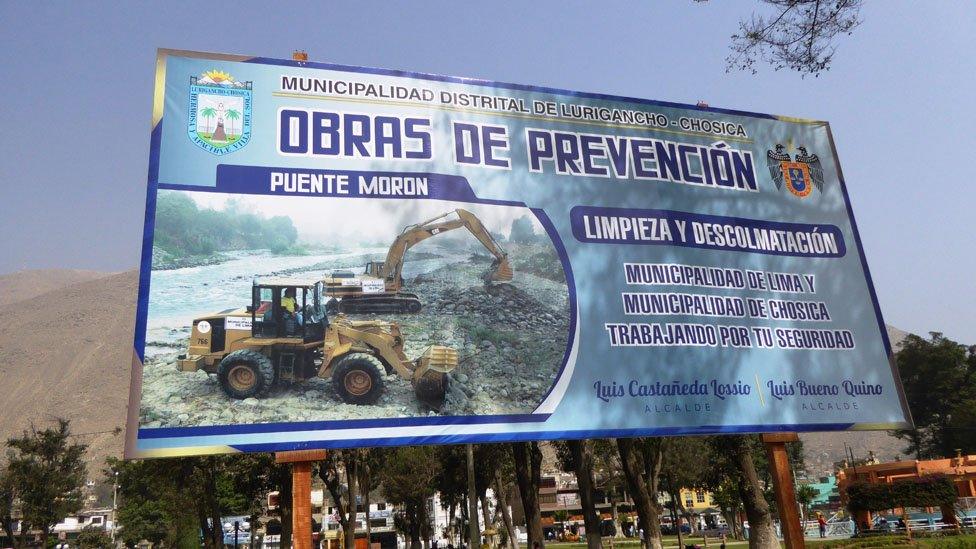
The local authorities advertise the preventative measures they are taking on large billboards
On the day I visited the site of the Moyopampa landslide, local authority workers were removing debris which had been littering the street since March.
Others were building floodwalls which residents hope will be strong enough to withstand the forces of nature.
Ms Inga says she will only move if the government offers her family proper housing.
In the meantime, she puts her faith in God.
"I am scared. We are scared. But in God I trust and he always has the last word," she says with conviction.
But then, as if having second thoughts, she looks up at the sky and adds: "But down here we should be the first ones to protect ourselves".